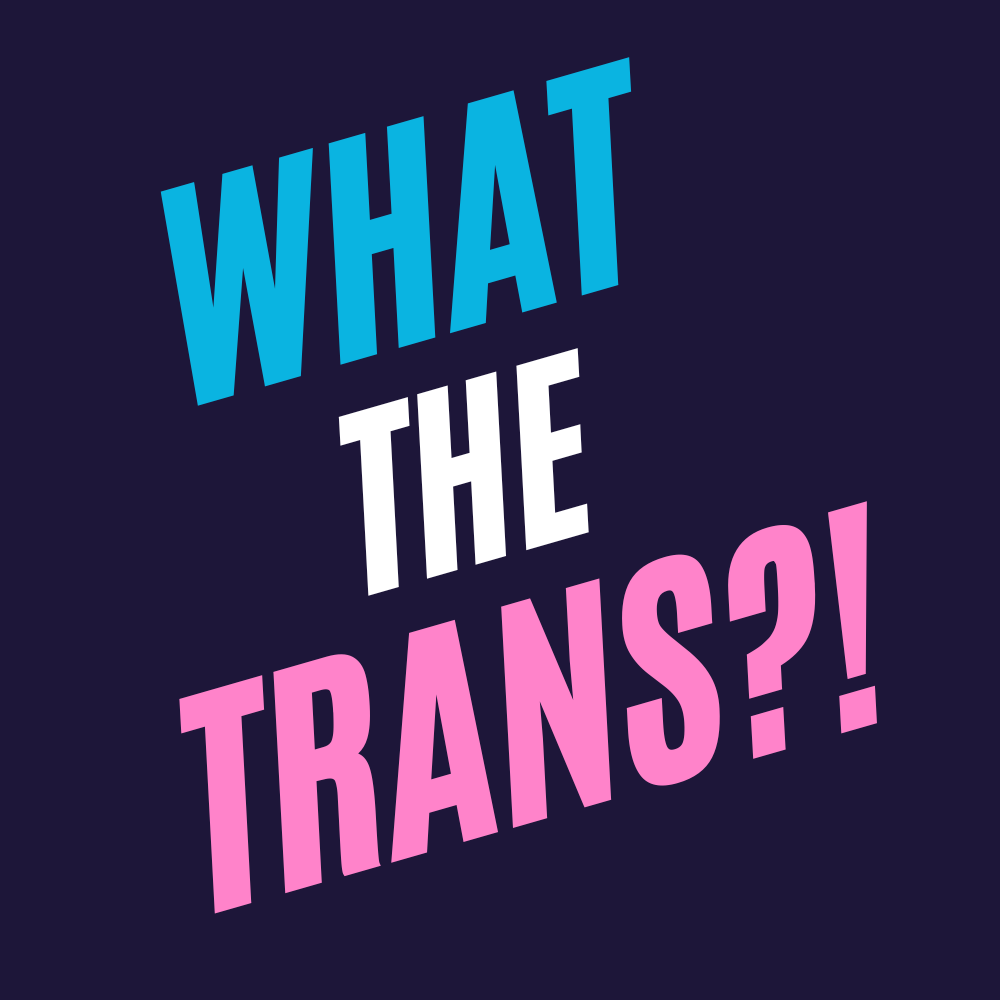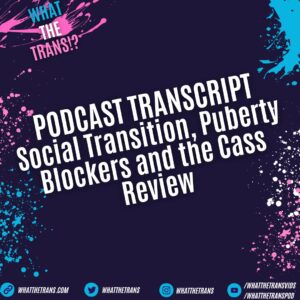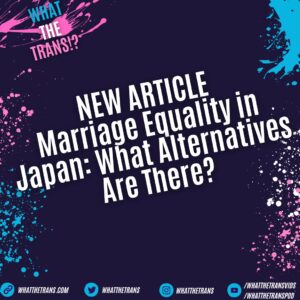This guide was jointly produced by Rowan from Glasgow, Milo from Glasgow, Luci Wilson and Shroomy (Kai M).
Dear readers, we are here with yet another NHS consultation related to trans kids. You may remember our previous consultation guide about the new proposals for the banning of puberty blockers. This is a new consultation, which is broader, and is defining the referral pathway for the new child and adolescent gender service.
The consultation runs until March 7th. We encourage everyone to fill it in and share your views, and you can refer to this article to help you make sense of all the material.
We especially encourage you to respond if you work within the NHS or have experience with young people’s gender services. But everyone’s voices are extremely valuable.
This consultation guidance took us a lot of time and effort to produce, so please respond and share widely!
Fill in the consultation here: Consultation link
Consultation documents
Equality and health inequalities impact assessment
The first thing to notice is that the Consultation Guide is a lot more substantial than what was offered for the one we discussed in our last article. This isn’t an afterthought, but rather a serious attempt to engage the public: what a consultation should look like. We congratulate the NHS for meeting the bare minimum we would expect from this process, and we welcome not having to do their job for them this time.
That said, there’s still a lot to parse, so with this article we will offer our thoughts on the various questions, highlight and offer some context not clear from the material.
What is the consultation about? – the New “Children and Young People’s Gender Service”
The proposed new service – the CYPGS – is intended as a replacement for Tavistock clinic, which so far has been the only gender identity service for young people across both England and Wales.
The new service will have two hubs for England and Wales. There is no planned start date, nor specified locations yet, but this is of course an improvement on only having one location. Interim care and waitlist management has been assigned to NHS Arden & GEM in Warwick.
This whole process is primarily informed by the Care Quality Commission Report, which identified three major issues:
- access to the service
- risk management for those on the waitlist
- understaffing
Setting aside our broader beef with the system as a whole, we think this report is a good starting point for understanding the issues with the service as it has existed thus far.
The proposal attempts to address these issues, and we will argue it misses the mark in most cases.
What problems is the new service trying to solve?
The biggest issue identified with the existing service is the number of patients on the waitlist, and the proposal has an interesting angle on this: instead of just suggesting higher clinical capacity, it offers a series of structural changes.
Let’s look at an example: There is a vague specification for a “pre-referral consultation” (not like this consultation, but rather a process of medical consultation for each patient) which would allow a local care plan to be created to cover the time a patient spends on the waitlist. This would involve GPs no longer being able to refer young people directly to the gender service, and instead referring to paediatrics and youth mental health services (other departments with already stretched resources) who will then refer them on to the GIC. There is an expectation that these services will mitigate the distress caused by waiting years for adequate treatment.
Now here’s the problem: it requires that these services are accessed before patients will be placed on the waitlist for the GIC. This will have the effect of deferring access to the waitlist itself for some patients, and adding a layer of gatekeeping when attempting to access the service. But: once a patient is referred, the date of the original referral to the previous service would be used for the waiting list of the Gender Service.
This is worth highlighting, because it would numerically reduce the waitlist… not by offering access to a higher rate of patients treated, but instead by wrapping up those patients in other services. This doesn’t actually get more patients treated. If you respond, you can look forward to calling this out in Question 7.
Some of the other changes follow this pattern, and it’s good to keep in mind that these changes are likely not made with patient wellbeing in mind, but instead as an attempt to reorganise in ways that don’t cost the service more resources directly or in the short to medium term. Our goal in responses then should be to call out direct issues and minimise the harm these changes will cause.
Below we will summarise each of the changes, and then go through our Question Guide.
The proposed changes and the problems they raise
Restrictions on who can refer children to the new service
The proposal:
- GPs would no longer be able to refer patients directly to the new gender service (CYPGS).
- Referrals to the service would only be able to be made by CYP (Children and Young People) Mental Health Services or Paediatric Services.
- The GP would first have to refer a patient to Mental Health or Paediatric services. These would assess the situation, initiate a “pre-referral consultation” with the CYPGS and only then refer them further for gender-affirming care.
- The date of the GP referral would be used once a patient makes it onto the waitlist for the gender service.
The issues:
This adds another bottleneck in the system. Referrals themselves were not criticised by the CQC, which is unsurprising given 90% were accepted by the service. Sixty-five percent of referrals came from GPs and 5% from non-healthcare professionals, suggesting that a majority of cases would be impacted by this change, despite there being no evidence that these types of referrals have been inappropriate in the past.
In short, it is an extra layer of gatekeeping, in our opinion without clear rationale behind it.
Our opinion: This is by far the worst of the new proposals, with the highest negative impact on patients. We recommend focusing on this one.
That isn’t to say that we are against children on the waiting list receiving interim care and mental health support. This is important and welcome.
An alternative could be GPs offering an additional referral to interim support alongside the main gender clinic referral. This would streamline the system and reduce gatekeeping, but also help with addressing the patients’ various needs while on the waiting list.
Minimum referral age of 7 years
The issues:
At present, those under 7 represent just 1.3% of referrals, so this would not affect the waitlist significantly.
The proposal documents themselves state: “There is no firm clinical evidence to determine whether a minimum age threshold should apply for referrals into the service and, if so, what that age threshold should be”.
Previous consultation contributors include gender critical organisations, and this is the only involved group we think would identify this as a priority. It is unclear why else this is being suggested, given that there is no clinical basis and no identified risk it purports to address.
Our opinion: While this may only impact a few people, we see this change as unnecessary in most cases and potentially harmful to those it does affect. Given the long waiting list (and the multiple referral steps, if the previous point is approved), it would risk needlessly delaying access for children who happen to develop unusually early.
Seventeen year olds will not be referred to the new children’s service
The proposal:
- At present, anyone referred to the service at this age would turn 18 well before being seen.
- Therefore, patients who reach 17 while on the waitlist would be removed, but able to seek a transfer of their referral to adult services through their GP.
- This would honour their original referral date to youth services.
The issues:
- While patients would be able to request this, GPs may be hesitant to carry it out while the patient is still 17. Therefore, clear guidance to GPs on this matter is needed.
- No process has been outlined to ensure the original referral date would be kept.
Our opinion: It seems to us that handover of these cases should ideally be standard procedure, as this would save the time for patients, GPs and NHS administrators.
However, the NHS seems to have ruled this out in previous consultations.
Other problems with the proposal
GIDS staff disregarded
One of the few points of praise in the CQC report was the care and commitment displayed by staff at Tavistock. It seems odd, therefore, that these staff – who are the only practising clinical experts in gender identity based care for young people in the NHS – appear to have not been consulted at all in the design of the new service, as highlighted by at least one senior clinician in the first round of consultation. On page 18 of the Engagement Report, they quote:
“As a Senior Clinician in GIDS I can categorically state that there has been minimal use of the clinical expertise of the GIDS in development of the new services”.
We do not think we need to explain why this exclusion of experts is strange and concerning.
Specific questions
Questions 1 and 2 ask about in what capacity you are responding to the proposal. While the responses are anonymous, what you report here may be associated with your response.
Q3: To what extent do you agree with the following point? “Referrals to the waiting list may only be made by general paediatric services or CYP mental health services.”
As mentioned, this is the worst change in this proposal. We recommend disagreeing with this point, with a focus on the issues outlined above. You may also draw on your own experiences of NHS waiting lists, or being bounced between different departments and the problems and stress this can cause.
Feel free to suggest alternative ideas to integrate paediatric services into young trans people’s care. We are not against extra support and integration, we are only against unnecessary gatekeeping.
Points to mention:
- The quality of referrals was not identified as a problem by the CQC. Given that 90% of referrals were deemed appropriate, it is unclear what benefit preventing GPs from making referrals to GIDS would have for either patients or the service.
- This change creates another “hoop” for patients to jump through, adding uncertainty. Given that distress due to uncertainty and lack of access to care while on the waitlist were identified as significant risks, if anything this change seems likely to worsen risks to patients.
- Creates additional strain on paediatric services. Doesn’t in any way reduce the burden on GPs either, as they would still have to make a referral.
- There is no clear indication of how this change would reduce waiting times, except for making some of that wait time be spent on a different list.
- GPs are intended to be able to assess if a patient would benefit from a specialist service: this is a significant part of the purpose of primary care, so there’s no reason to move referrals out of the GP’s capacity.
- Would make it harder to track how many people are on the waiting list for adolescent gender care, with potential negative effects on funding as a result.
Q4: To what extent do you agree with the following point? “Children under 7 years of age will not be added to the waiting list.”
We recommend disagreeing with this point, with a specific focus on the lack of clinical basis for introducing it, and the potential complications for the small number of cases it would impact.
- The NHS themselves admit that “There is no firm clinical evidence to determine whether a minimum age threshold should apply for referrals” [EHIA]. Introducing a minimum age thus seems entirely arbitrary. Given that such referrals seem to constitute only around 1.3% of the total waitlist for the service, it seems unlikely that enforcing a minimum age limit will meaningfully impact wait times.
- Merely being referred does not imply any specific clinical outcome and none of the current reporting indicates that such referrals have been disproportionately deemed inappropriate, so it is unclear what this change is intended to either guard against or achieve.
- Given this, the only effect of implementing a minimum age would be to prevent some (admittedly small) number of children who would benefit from the specialist care available via the new service from accessing it, likely leading to compounded distress and a more complex care profile in the future.
Q5: To what extent do you agree with the following point? “Young people aged 17 years will not be added to the waiting list of the children and young people’s gender incongruence service as a temporary measure in response to long waiting times.”
We suggest “neither agree nor disagree”.
- The most important thing is to avoid creating a gap in care. The NHS website states that 17 year olds can be referred and seen by the adult clinics, so in theory this change could be viable. However, safeguards need to be put in place to ensure this happens, and GPs need to be informed about the correct process for referring 17 year olds.
- In practice, the waitlists for both youth and adult gender services are years long and seem unlikely to fall to one year soon, so this is highly unlikely to delay anyone’s access to care. As they will age out of the waiting list very quickly, it seems unlikely that 17 year olds are creating significant additional wait times for other users of GIDS. While this change might marginally lower wait times, it does not address the understaffing and underfunding of the service at the source of the problem.
Q6: To what extent do you agree with the following point? “Young people who reach 17 years of age while on the waiting list for the children and young people’s gender incongruence service will be removed from the waiting list; they may seek a referral into the adult gender service with their original referral date into the CYP service honoured.”
We suggest “neither agree nor disagree”.
- This change would be unacceptable without the original referral date being honoured.
- There being a gap of a year in a patient’s reliable access to care would be unacceptable, so this change would only be possible with adequate integration of Adult Services accepting 17 year olds onto their lists, and a reliable system to honour those previous waiting list places.
- We have many anecdotal examples of trans patients having difficulty with the transition between services, even when they have been seen by the young people’s service. This is an area which needs improvement.
- A direct handover would be a better approach. We acknowledge that this was previously dismissed, but calling attention to it being the ideal option is still worthwhile.
Q7: To what extent do you agree with the following point? The role of the pre-referral consultation service.
This “question” refers to the requirement for a “consultation” to be made before the referral is passed on to the gender clinic. This would involve a discussion between CYPGS (new gender service) and the local paediatric services making the referral. The service spec describes it as a “consultation, advice and liaison meeting, including an initial formulation of the young person’s needs and risks and a local care plan to support the child or young person”.
The outline for what this consultation will do is extremely vague, but it seems to be an attempt to provide support while on the waiting list, but also delay patients’ access to said list at the same time.
We suggest “somewhat disagree”.
- Support from other services for patients experiencing distress while on the waitlist is extremely valuable and is welcomed. Our agreement ends here.
- Support should not come at the cost of a place on the waiting list. There is no reason why this support could not be offered alongside a GP referral to the CYPGS (new gender service), rather than being an extra referral step before accessing CYPGS.
- Local paediatric services and mental health services are not gender specialists, and may simply be experienced as gatekeepers to the gender service, undermining the support they might offer.
- Drafting a care plan and the resources drawn from these services would be better spent on the resources of the Gender Service itself. This strategy shifts the burden of responsibility for these patients onto other services, which themselves are known for lacking capacity.
- Not allowing patients to be placed directly on the Gender Service waiting list would hamper oversight. It would become harder to know how many people are waiting on the gender service, and would make the problem look smaller than it is, which may in turn undermine resource allocation and other strategic decisions made at higher levels.
- The clinical benefit of such a consultation is unclear, and may instead harm patients through introducing complexity and extra steps.
Q8: Do you have any comments on any other element of the service specification – if so, please specify below in the text box below.
The primary issues identified with the service by the CQC report, which is informing this whole thing, are problems of understaffing and underfunding. This has lead to numerous problems which you may wish to mention here as being unaddressed by this service specification:
- Staff having abnormally high workloads, averaging around 45 patients each but with some seeing as many as 100.
- Problems with record keeping, as staff have workloads too high to report for research.
- Two centres will not solve this issue if they don’t have a plan to increase total staffing, something which would have been mentioned by the service specification if it were an intention.
- The wait list is 1500 patients long and the NHS is failing its legal obligations to these patients.
- The development of the new service has made minimal use of the clinical expertise of the Gender Identity Development Service (GIDS).
- The following options are not explored at all:
- Streamlining the intake process rather than complicating it
- Increasing staffing
- A move to desegregation of trans healthcare and an informed consent model of care
The consultation asks that you keep your responses specific to this service specification, likely to avoid these broader strategic criticisms. However, we still think that they are important and valuable to talk about, as the NHS will have to consider what the public opinion is on the matter.
Q9: To what extent do you agree that the Equality and Health Inequalities Impact Assessment reflects the potential impact on health inequalities which might arise as a result of the proposed changes?
We suggest a neutral response to this question.
- While the proposed service is clearly insufficient, the current EHIA does accurately reflect the impact of the proposed plan on service users, as much as the impacts can be anticipated from the relatively vague specification we have so far.
Conclusions
If you’ve taken the time to fill out the response, whether you are trans or cis, thank you. Witnessing and challenging these processes can be exhausting and annoying, but it is a valuable part of the fight.
This is also a microcosm of the wider issues in the NHS, as it is reorganised in ways that diminish its efficiency and value to its patients. Trans kids are left behind by the service whose clinicians want to help them, but lack the resources and support to do so. Many young people and parents will be forced to pay privately for their healthcare as waitlists stay long.
This is what brick by brick looks like.
By seeing it, and understanding it, and fighting it, we can learn to see it and fight it elsewhere. We aren’t alone in this; many disabled and chronically ill people are also under the same threats. There is solidarity to be found.
🧱
References
The list of literature consulted in the making of this article can be found here.





